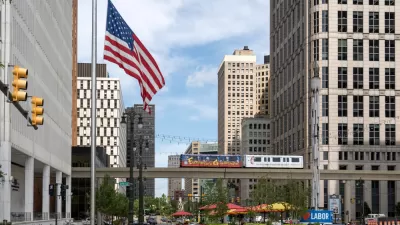A "green-collar job force" made up of low-income people is necessary to get those with fewer resources on the initially costly green living bandwagon, according to civil rights lawyer Van Jones.
"In 1996, Jones co-founded the Ella Baker Center for Human Rights-a nonprofit organization designed to keep kids off the streets and out of jails. And today he is trumpeting an idea that's disarmingly simple: Let's funnel the coming wave of jobs in sustainable industries toward those who most need them, creating a "green-collar" job force that gives the working poor and minorities a chance to get ahead while also ensuring that this new economy has a labor force behind it. In 2005, Jones and his staff of 20 people launched a campaign for green-collar jobs. Two years later, they convinced the Oakland City Council to fund the first-ever Green Jobs Corps, which will begin training its first recruits later this year in fields like installing solar panels, weatherizing buildings, and laying green roofs."
"The power of a solution that bridges economic and environmental development, explains Jones, is that it has the potential to unite traditionally disparate factions of the progressive movement. 'For at least a generation, activists of all constituencies have believed they could fix their problems on their own,' he says. 'But separatism won't work. On the environmental side, you'll end up leaving so many people out that they'll be undoing all the good and undermining your efforts.' On the social-justice side, says Jones, boosting wages with the same old dirty jobs inevitably ends up hurting the poor, accelerating problems like cancer and asthma."
FULL STORY: Black and Green

Planetizen Federal Action Tracker
A weekly monitor of how Trump’s orders and actions are impacting planners and planning in America.

Maui's Vacation Rental Debate Turns Ugly
Verbal attacks, misinformation campaigns and fistfights plague a high-stakes debate to convert thousands of vacation rentals into long-term housing.

San Francisco Suspends Traffic Calming Amidst Record Deaths
Citing “a challenging fiscal landscape,” the city will cease the program on the heels of 42 traffic deaths, including 24 pedestrians.

Defunct Pittsburgh Power Plant to Become Residential Tower
A decommissioned steam heat plant will be redeveloped into almost 100 affordable housing units.

Trump Prompts Restructuring of Transportation Research Board in “Unprecedented Overreach”
The TRB has eliminated more than half of its committees including those focused on climate, equity, and cities.

Amtrak Rolls Out New Orleans to Alabama “Mardi Gras” Train
The new service will operate morning and evening departures between Mobile and New Orleans.
Urban Design for Planners 1: Software Tools
This six-course series explores essential urban design concepts using open source software and equips planners with the tools they need to participate fully in the urban design process.
Planning for Universal Design
Learn the tools for implementing Universal Design in planning regulations.
Heyer Gruel & Associates PA
JM Goldson LLC
Custer County Colorado
City of Camden Redevelopment Agency
City of Astoria
Transportation Research & Education Center (TREC) at Portland State University
Jefferson Parish Government
Camden Redevelopment Agency
City of Claremont





























